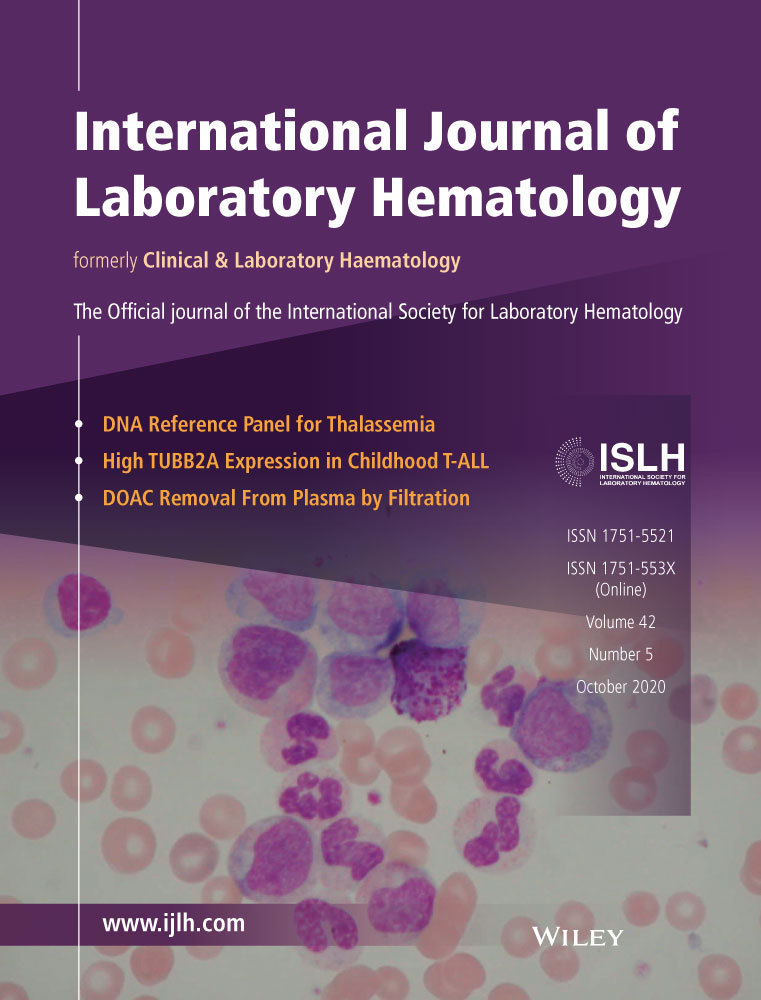Two-site evaluation of a new workflow for the detection of malignant cells on the Sysmex XN-1000 body fluid analyzer
[Correction added on 23 July 2020, after first online publication: the definition of the acronym ‘HF-BF’ has been corrected in the Abstract, Section 1, the captions of Figures 3 and 4, and the footnote to Table 1.]
Abstract
Introduction
The presence of high fluorescent cells (HF-BF) on the Sysmex XN-1000 hematology analyzers has gained interest regarding the prediction of malignant cells in body fluids, but lacks sensitivity. We aimed to increase this sensitivity by combining HF-BF value, automated results, and clinical information.
Methods
We evaluated a new workflow for the management of body fluids in the hematology laboratory, including the HF-BF criterion and clinical information. In two laboratories, 1623 serous fluids were retrospectively analyzed on the XN-1000 BF mode. All samples were morphologically screened for malignant cells. Optimal HF-BF cutoffs were determined to predict their presence. Thereafter, the added value of clinical information was evaluated. Other reflex testing rules (eosinophilic count >5% and presence of the WBC Abnormal Scattergram flag) were also used to refine our workflow.
Results
Optimal HF-BF cutoffs in the two hematology centers were 108 and 45 cells/µL, yielding a sensitivity/specificity of 66.7/93.6% and 86.8/66.6% for malignant cell detection. When adding clinical information, sensitivity/specificity evolved to 100.0/68.9% and 100.0%/not determined. Of 104 samples containing malignant cells, 97 had positive clinical information; the remainder had a HF-BF > cutoff.
Conclusion
Combining clinical information and HF-BF reached 100% sensitivity for malignant cell detection in body fluid analysis. Lack of robustness of the optimal HF-BF cutoff deserves the use of local cutoffs. Rapid automated results reporting from the XN-1000 BF mode are also feasible in clinical practice. Prospective evaluation of the workflow is needed before its implementation in clinical practice.
CONFLICT OF INTEREST
F. Mullier reports institutional fees from Stago, Werfen, Nodia, Roche, Sysmex, and Bayer. He also reports speaker fees from Boehringer Ingelheim, Bayer Healthcare, Bristol-Myers Squibb-Pfizer, Sysmex, Stago, Werfen, and Aspen all outside the submitted work.




